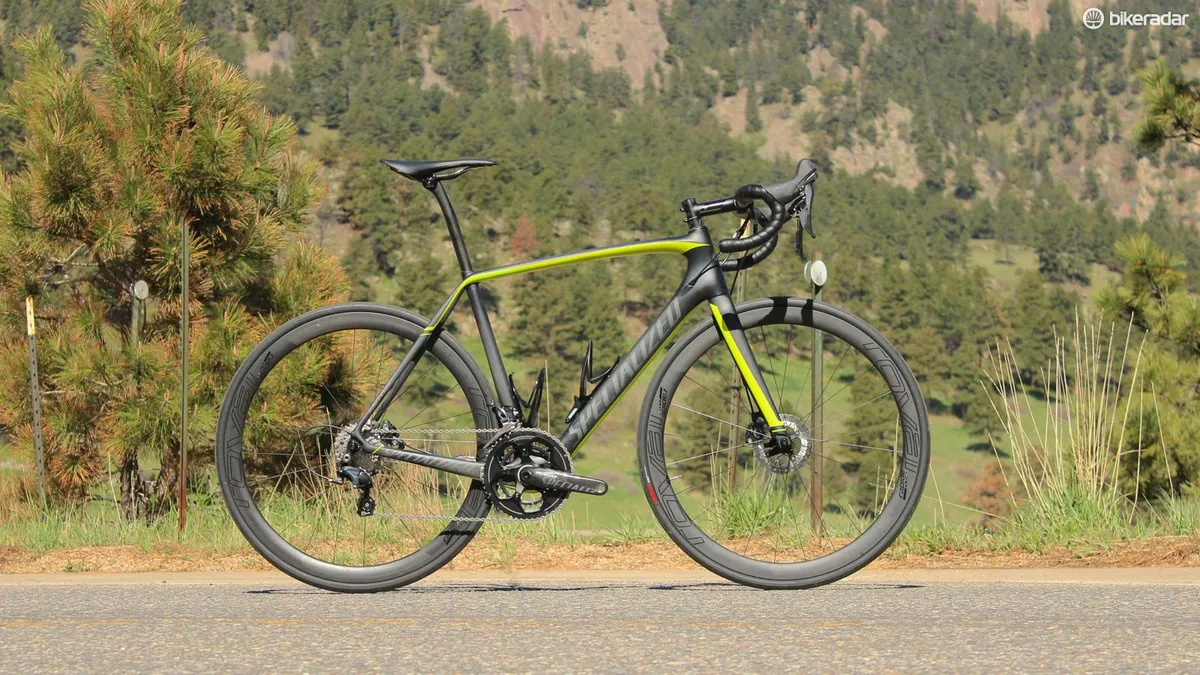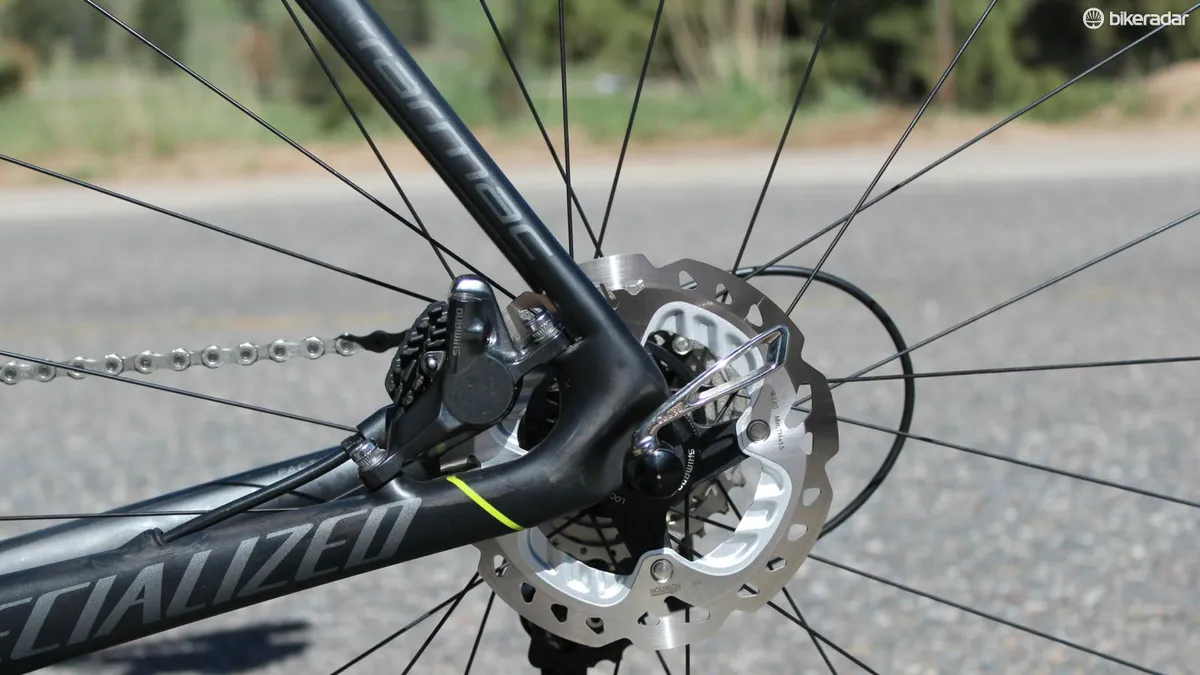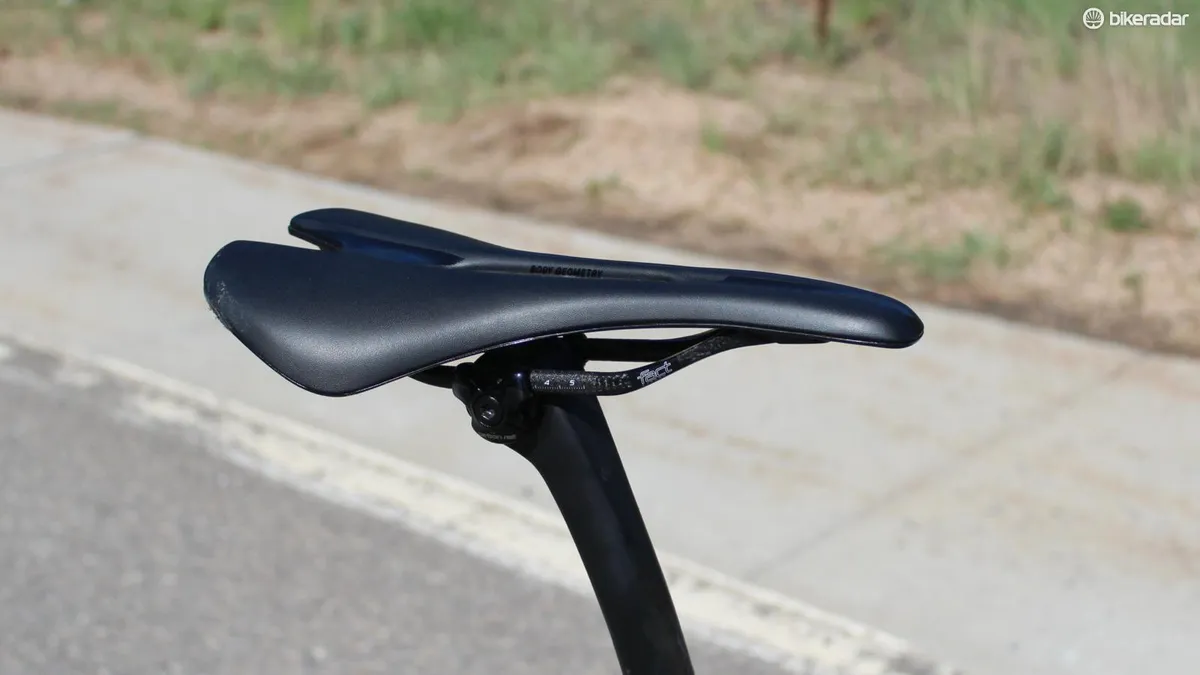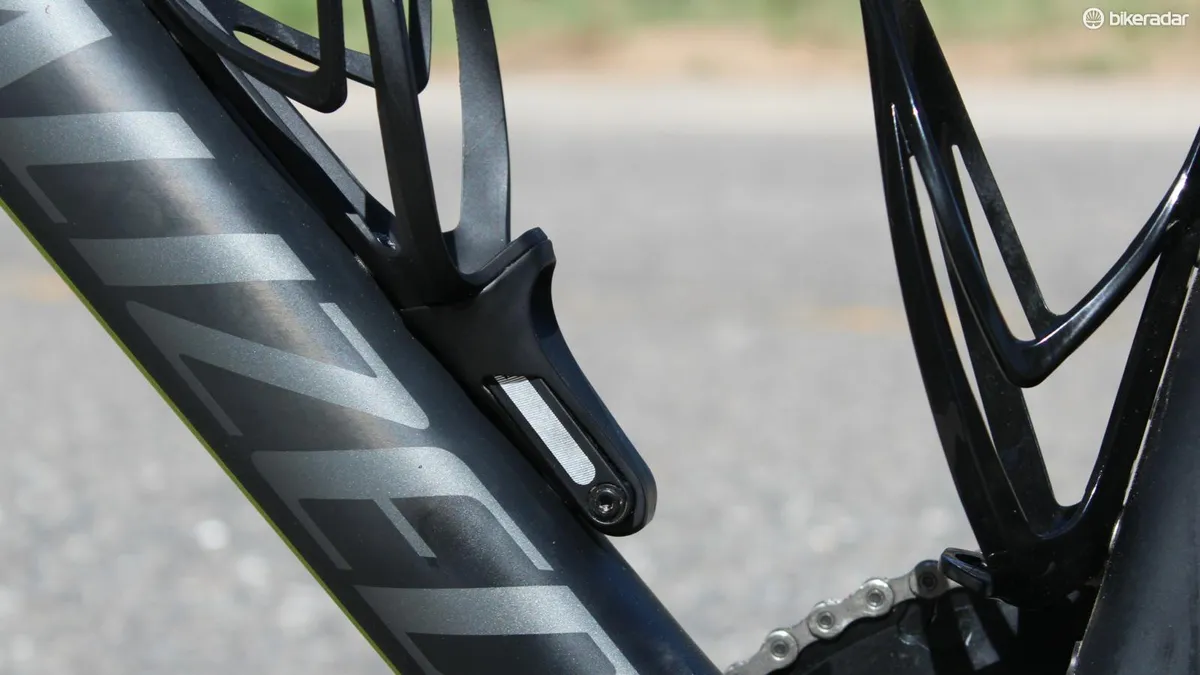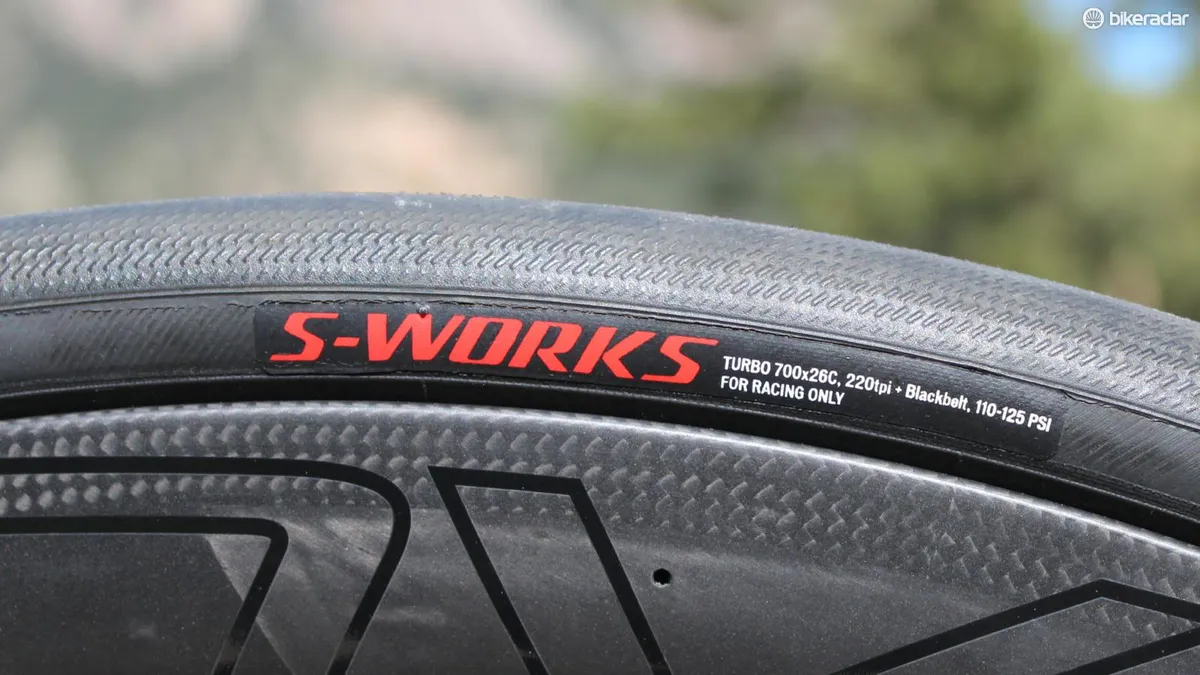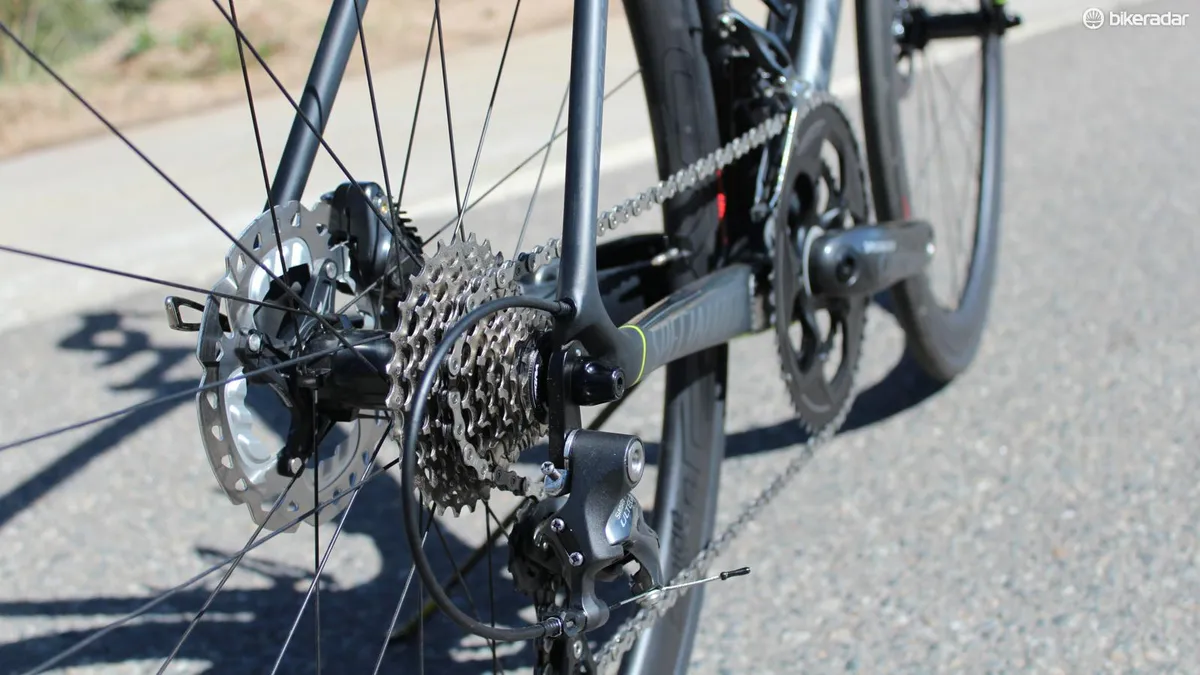Third in the line of Specialized Tarmac Disc bikes — behind the two Di2 models — the Tarmac Pro Disc offers the same race-bike-meets-discs geometry as its top-end siblings, along with carbon clinchers, hydraulic braking and mechanical shifting.
If you want a race-geometry machine with disc brakes, and you're okay being locked into using the Roval wheels with proprietary spacing that allows for said race-bike-meets-discs geometry, then the Tarmac Pro Disc could be the perfect bike for you.
I spent a number of months testing the top-end S-Works Tarmac Disc, and honestly the only thing keeping it from a full five-star ranking was the wheel issue. It remains the best disc road bike I have ridden by a long shot. For context, I prefer race geometry to the taller, longer endurance geometry that accommodates the extra hub width and necessary chainstay length for discs. The Tarmac Disc bikes handle exactly like race machines, with confident, nimble steering, efficient acceleration and a lively overall feel.
Only a few road disc bikes venture off the tall-head-tube, long-wheelbase map of endurance bikes. The Focus Cayo Disc bikes have shorter head tubes (but still longer wheelbases and somewhat slack head tubes). The Rose Xeon CDX 3100 Di2 gets closer to race geometry, with a shorter head tube and shorter (411mm) chainstays. This Tarmac Pro Disc, in a size 56cm, measures 160mm at the 73.5-degree head tube and 405mm and the chainstays.

A matter of millimeters: Adding a 135 disc hub and keeping the tight 405mm Tarmac chainstay length means a proprietary hub additional offset for a good chainline
Why the obsession over these head tube and chainstay numbers? Well, first, because they contribute in large part to how the machine feels on the road. Second, because these numbers are rare for road disc bikes.
This leads us to the wheel situation. Adding a 135mm-wide rear disc hub exaggerates the angle of the chainline in the small-ring/small-cog configuration when compared to a standard rim-brake wheel with a standard 130mm hub.
With a longer wheelbase, this isn't such a problem for endurance bikes. For race bikes, however, there is an issue, and the chainstay length must be extended. Unless... you are Specialized where the wheels and the frame can be designed as a unit. The Roval SCS Disc wheels feature a custom offset, putting the cassette further inboard than a standard wheel, providing perfect shifting without adding so much as 1mm in chainstay length.
Those Roval Rapide CLX 40 wheels shown here are performance hoops in their own right, offering light and aero carbon rims in a strong, lively 1,425g build that rolls on DT Swiss 240 internals and ceramic bearings. The rims are 16.2mm wide internally, but come with 26mm S-Works clinchers for a fast-rolling, confidence-boosting package. (Tarmac Pro Race spec is actually theRoval Rapide CL 40 wheels with Turbo Pro 25mm clinchers. I will test those on this bike for the coming Tarmac Pro Race review.)
UCI rules notwithstanding, this is a bike you could race with great enthusiasm right out of the box. Whether or not you intend to race, you should intend to keep these wheels on the bike, because if you put on a standard 135mm rear disc wheel (and the required derailleur hanger) you will lose shifting performance. (Yes, I tried this. When in the small ring, you can't use the 11- and 12t cogs.)
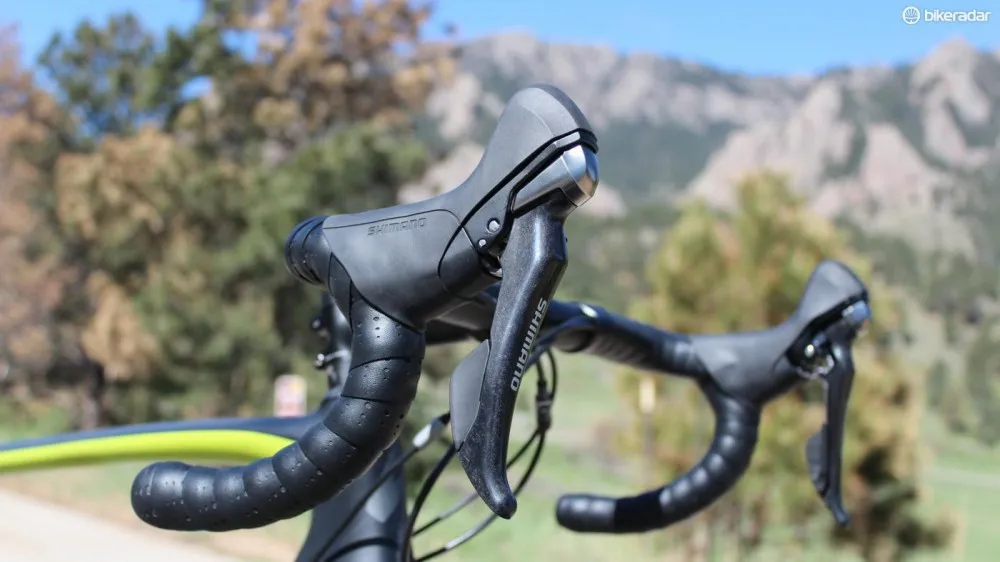
Shimano R685 levers feature mechanical shifting and hydraulic braking
With the exception of the Specialized carbon crank and the corresponding 52/36 chainrings, the brakes and drivetrain are all Shimano. The non-series R685 levers tie into Shimano Ultegra mechanical derailleurs and the R785 hydraulic brake calipers.
Specialized parts round out the build, from the carbon post and Toupe saddle to the short-reach alloy bars and stem, and even down to the bottle cages with the integrated multi-tool.
Stay tuned for a full review on this US$6,200 / £4,500 bike. In the meantime, check out the gallery above for some detailed looks at the machine.
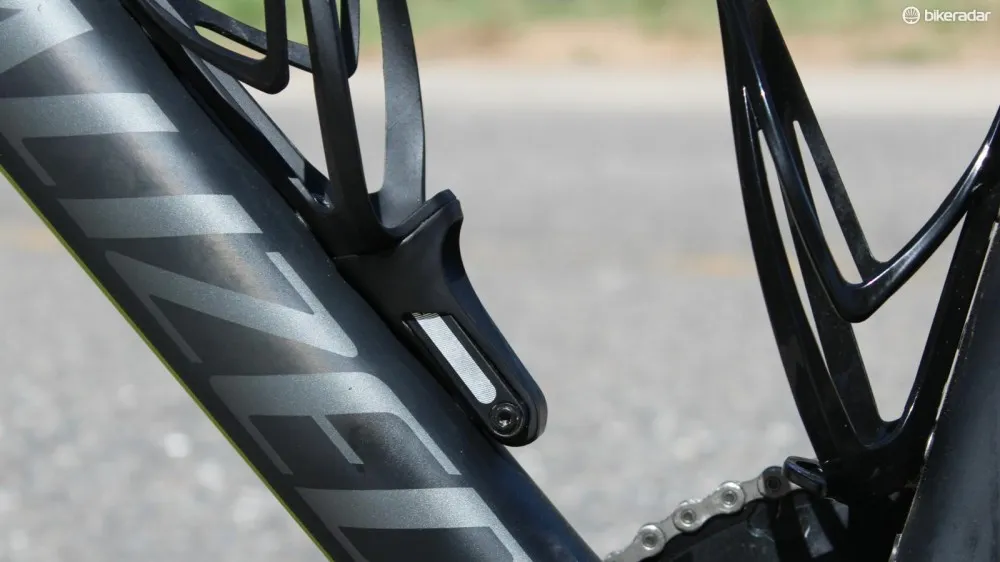
Specialized continues to expand its SWAT concept of tucking tools — and sometimes hydration — in svelte packages
